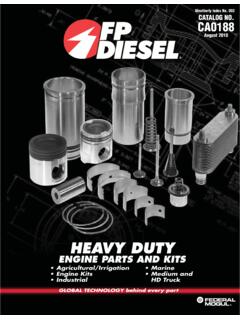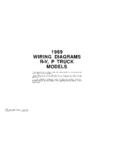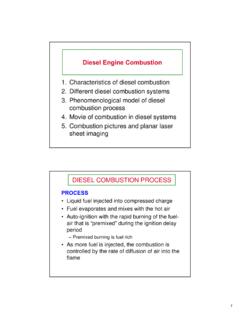Transcription of TOW TRUCK DRIVER’S SAFETY CERTIFICATION STUDY GUIDE
1 1 TOW TRUCK DRIVER S SAFETY CERTIFICATION STUDY GUIDEC opyright 2016 Utah SAFETY Council1574 West 1700 SouthSalt Lake City, UT (7233) OF CONTENTSC hapter 1 - Introduction .. page 5 Chapter 2 - Types of Tow Trucks .. page 6A. Tow Trucks .. page 6 Light- duty tow truckMedium- duty tow truckHeavy- duty tow truckB. Car Carriers .. page 7 Car carrierChapter 3 - Tow TRUCK and Equipment Limitations .. page 8A. Tow TRUCK Ratings .. page 8 Gross vehicle weight rating (GVWR)Gross axle weight rating (GAWR)Curb weightOverhang (OH)Safe towing capacity (STC)Front axle weight (FAW)Wheelbase (WB)B.
2 Tire Capacity .. page 11C. Equipment Capacities .. page 11 Breaking strength ratingWorking load limit (WLL)Chapter 4 - Tow TRUCK Parts and Equipment.. page 13A. Booms.. page 14 BoomMastB. Winches .. page 14 WinchAuxiliary winchDrag winchPower takeoff (PTO)C. Cable (Steel Wire Rope).. page 14 Cable3 WrapSwageThimbleWedge socketSheavesD. Snatch Blocks .. page 15 Snatch blockE. Chains.. page 15 Chain grade or strength ratingF. Towing Devices .. page 18 Tow slingTruck hitchTow hitchWheel-liftUnderliftSecuring devicesG. Dollies .. page 19 DollyH. Tow TRUCK Lights .. page 19 Hazard light(s)Auxiliary tow lightsDrag lightsWork lightsChapter 5 - Light- duty Safe Towing Practices .. page 21A.
3 Before You Tow .. page 21B. Towing with a Wheel-Lift .. page 23 Wheel chockL-arm/wheel armWheel strapsWheel securing devicesC. Towing with a Sling or TRUCK Hitch .. page 25T-hookGrab hookJ-hookSafety wrapAir damFasciaSpoilerSpacer block4D. During the Tow.. page 27 General Rules and Responsibilities For SAFETY Driving SafetyChapter 6 - medium - duty and Heavy- duty Safe Towing Practices .. page 30A. General Hook-Up Procedures .. page 30 DrivelineAxle coverB. Towing Trucks or Tractors from the Rear.
4 Page 32 ForksCross-memberC. Towing Trucks, Tractors, or Tractor-Trailer.. page 33 Combinations from the Front D. During the Tow.. page 34 General Rules and Responsibilities For SafetyChapter 7 - Car Carriers.. page 36A. Loading a Vehicle .. page 37 Bed locksRear bed stabilizerBridleB. During Transport .. page 40C. Unloading a Vehicle .. page 40 General Rules and Responsibilities for SafetyHeadboardChapter 8 - Customer Service and Professionalism .. page 42 Chapter 9 - Utah Specific Regulations.. page 44R909 CertificationInsuranceReceiptsRatesChapt er 10 - TRUCK and Equipment..page 46 Glossary .. page 545 CHAPTER 1 - INTRODUCTION In this STUDY GUIDE you will learn the basics of light duty towing including some of the most important laws and regulations regarding the towing industry.
5 After reading this STUDY GUIDE you will take an online test at In order to pass you will need a score of 75% or better. Upon completion of this program you will be issued a tow TRUCK driver CERTIFICATION card from the Utah SAFETY Council. This card will expire after two years. The written test for tow TRUCK CERTIFICATION contains questions from all parts of this booklet as well as the video portion you will watch upon registering. Be sure to read and STUDY the entire booklet before you register and submit payment to take the written test. Once you begin the online CERTIFICATION process you must complete the program during that session. You should also be familiar with the Utah state vehicle and traffic law, and with federal and state SAFETY Tow TRUCK Driver SAFETY CERTIFICATION program was developed by the Utah SAFETY Coun-cil with support and feedback from; Utah Department of Transportation and Motor Carrier Division, Utah Towing and Recovery Association, Utah Highway Patrol, as well as a focus group of several Utah towing and recovery business owners.
6 The contents of this STUDY GUIDE may not be reproduced in any way without the express written permission of the Utah SAFETY 2 - TYPES OF TOW TRUCKSThis chapter describes tow trucks (including car carriers) by weight and body type. Terms explained in this chapter: light- duty , medium - duty , heavy- duty tow trucks; car TOW TRUCKSTow trucks are generally classified by weight (light- duty , medium - duty or heavy- duty ) and by body type (tow-only or car carrier). Characteristics by weight are as follows:1. Light- duty : Light- duty tow trucks have a GVWR of 8,600 to 10,000 pounds. They are designed to tow or transport automobiles, pickup trucks and small medium - duty : medium - duty tow trucks have a GVWR of 10,001 to 26,000 pounds.
7 They can tow or transport medium -size trucks, buses and recreational vehicles, as well as smaller Heavy- duty : Heavy- duty tow trucks have a GVWR of over 26,000 pounds. They are designed to tow or transport large buses, trucks, trailers and heavy construction CAR CARRIERSCar carriers are designed to transport one to three motor vehicles on a flat platform that slides or tilts to the ground to facilitate the loading and unloading of the vehicle(s). In ad-dition, they are generally equipped with a wheel-lift or underlift that enables them to tow an additional vehicle behind them. Car carriers are sometimes referred to as slidebacks, rollbacks, equipment transporters, or flatbeds.
8 Car carriers are up to 40 feet in length, bum-per to bumper, including bed load. They generally transport (and tow) automobiles, pickup trucks and small vans, although large car carriers (often referred to as equipment transport-ers) transport large vehicles, farm machinery and construction equipment. Car carriers are also often used to transport vehicles that would be damaged by conventional towing tech-niques, or vehicles with severe wheel damage. 7 Note: These images depict a typical car 3 - TOW TRUCK AND EQUIPMENT LIMITATIONSThe purpose of this manual is to explain how to perform proper towing procedures, and to help ensure your SAFETY when you tow. This chapter will define various ratings that are used to determine safe towing capacity for tow trucks and working load limits for equipment that is generally used in towing explained in this chapter: gross vehicle weight rating (GVWR); gross axle weight rating (GAWR); curb weight; overhang (OH); safe towing capacity (STC); front axle weight (FAW); wheelbase (WB); breaking strength rating; and working load limit (WLL).
9 The most common cause of accidents that lead to death of and injury to tow TRUCK operators is equipment failure. In the vast majority of cases, these accidents are caused by exceeding working load limits for the equipment. Pay special attention to the manufacturer s equip-ment ratings, which indicate the limits for its use. When you exceed the rating posted on your equipment, you, not the manufacturer, will be at fault if the equipment fails. Exceeding equipment ratings can also put you and others at risk of injury or death. You should never exceed the working load limit set by the manufacturer. Even a one-time overload can cause undetected damage, weakening the equipment sig-nificantly, and causing equipment failure that can result in injury or ability to tow properly and safely is limited by the weakest component on your tow TRUCK .
10 For example, if a tow TRUCK that is rated for 16 tons operates with L-arms that are rated for only 2 tons, the L-arm is a weak link. Never exceed the rating of the weakest link. The rest of this chapter describes how tow trucks and their equipment are generally TOW TRUCK RATINGSThe most widely recognized rating for tow trucks (or any other type of TRUCK ) is the manu-facturer s gross vehicle weight rating (GVWR). This rating consists of the unladen (unload-ed or curb ) weight of a vehicle, plus the maximum carrying capacity recommended by the vehicle s manufacturer. The axles on a TRUCK are also rated. A TRUCK s gross axle weight rating (GAWR) is the amount of weight that a single axle, or a combination of axles, is designed to carry.





